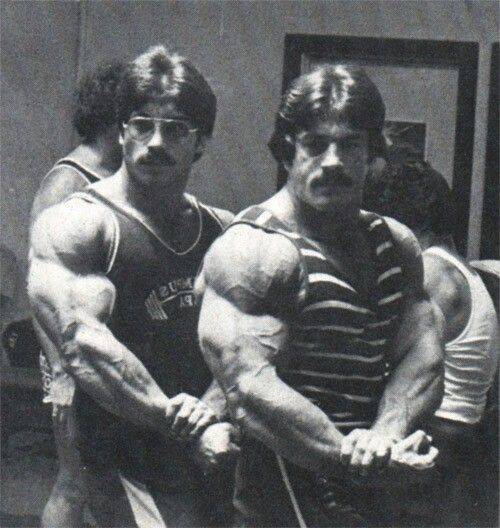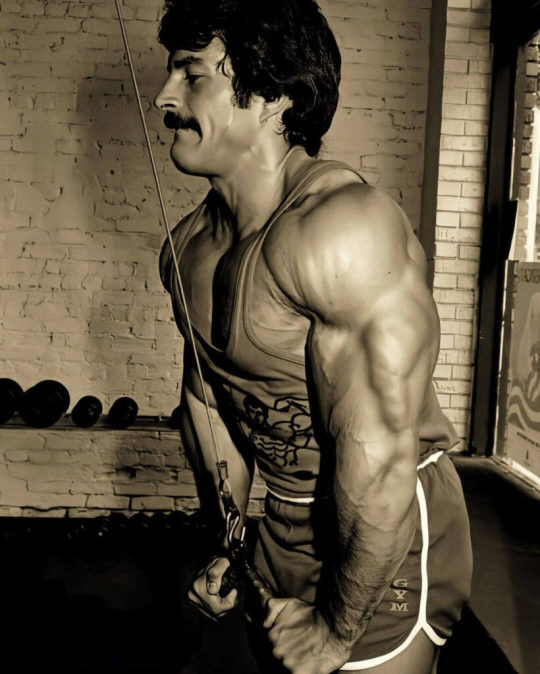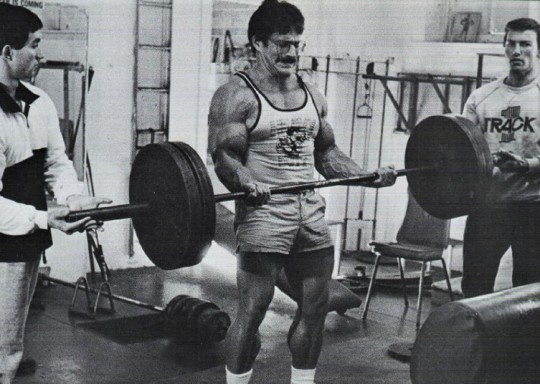#bodybuilding tips
Text
Your Roadmap to Fitness Achievement
Fitness Quotes
Unique motivational quotes to inspire bodybuilders and fitness enthusiasts:
1. “Success isn’t always about greatness. It’s about consistency. Consistent hard work leads to success. Greatness will come.” – Dwayne ‘The Rock’ Johnson
2. “The pain you feel today will be the strength you feel tomorrow.” – Arnold Schwarzenegger
3. “Strength does not come from the body. It comes from…

View On WordPress
#adopting healthy lifestyle tips#and bodybuilding diet plans enhances one&039;s journey. Experimenting with exercise variations#and cardiovascular workouts into your regimen can yield impressive results#and gym motivation play a significant role in achieving fitness goals#and integrating flexibility exercises and endurance training are paramount#and recovery strategies for athletes can also contribute to your fitness routine#and workout routines are crucial#bodybuilding supplements#bodybuilding tips#Exploring bodybuilding competitions#fitness gear and equipment#fitness training#For those seeking fitness excellence#Incorporating strength training exercises#injury prevention in fitness#muscle building techniques#proper nutrition for bodybuilders#Setting clear fitness goals#Weightlifting workouts
0 notes
Text
3 Unique Tips for Bodybuilding- वर्कआउट हेवी वेट के साथ कहना चाहिए या लाइट वेट.
आप लोग जब भी वर्कआउट कहते हो तो आपके मन में कभी ना कभी ऐसे सवाल जरूर आए होंगे कि हमे वर्कआउट स्लो repetition के साथ करना चाहिए या फिर फास्ट repetition के साथ करना चाहिए, वर्कआउट हेवी वेट के साथ करना चाहिए या फिर लाइटवेट के साथ, वर्कआउट के बीच हमें कितने सेकेंड का गेप रखना चाहिए और एक एक्सरसाइज को कितने सेट और कितने repetition लगाना चाहिए. इसके अलावा वर्कआउट के बीच में किन बातों का ध्यान रखना चाहिए. आइए जानते हैं ऐसी 3 Unique Tips for Bodybuilding जिससे कि हमे वर्कआउट के बीच और ज्यादा ताकत महसूस हो और हमारे बॉडी जल्दी बने.... Read More

#bodybuilding motivation#bodybuilding india#bodybuilding#bodybuilding exercises#gym workout#gym exercise#gym body#gym motivation#gym#fitness#health#gymtips#workout tips#bodybuilding tips
0 notes
Text
5 best chest exercises for muscle growth

Hello hello!
I have been working out for a few years now and have tried different types of chest exercises.
Personally i do the exercises to grow my chest and focus a lot on mind muscle connection(really feeeling the muscles when you use them haha)
I thought i would share some of the knowledge i have on this topic and show which exercises that stimulate the chest the most and helps it grow.
Implement a few of these or all of them for a massive chest :)
Hope you find these tips helpful !!
Thank you all!
(Pls send me a message of your thoughts on the article if you like it or not)
LIGHT WEIGHTT!
#gain muscle#muscle#muscles#muscular#great pecs#pecs#body building#bodybuilding tips#gym body#amazing body#health#gaining#muscle gains
0 notes
Text

Strength is not just measured in weights lifted, but in the resilience of the spirit, the commitment to self-improvement, and the unwavering dedication to one's own well-being.
#fitness tips#fitness#fitnesslifestyle#fitnessmotivation#workout#gym#women fitness#fitnessguide#weight loss#yoga#women#fitwomen#fit girls#beautiful women#fitness model#fitness beauty#fitgirls#girls with abs#female bodybuilder#muscle girls
1K notes
·
View notes
Text
बॉडीबिल्डिंग के लिए बेस्ट लो बजट डाइट प्लान|
मांसपेशियों को बनाने की कोशिश करते समय आपको जो पहला प्रभाव करना चाहिए, उनमें से एक स्वस्थ भारतीय ट्रिमिंग आहार खाना है। यह सुनिश्चित करना महत्वपूर्ण है कि आपकी फिटनेस की स्थिति को बनाए रखने के लिए आपके भारतीय ट्रिमिंग आहार के पोषक प्रोफाइल में अतिरिक्त प्रोटीन, जटिल कार्ब्स और स्वस्थ वसा शामिल हैं। Read more.....

#health#nutrition#healthy diet#healthy breakfast#healthy weight loss#healthy recipe#healthylifestyle#nutritionist#healthier#bodybuilding tips#bodybuilding food#bodybuilding supplements#bodybuilding competition#workout
0 notes
Text
Boss woman

Extraordinary arts only on patreon
#gymspiration#workoutmotivation#fitness journey#fitspiration#fit girls#fitbody#sexy abs#fitfam#weightlifting#fitness gym#fitnessjourney#athlete#glutes#athletic#beachbody#fitness#fitness tips#training#home workout#female bodybuilder
33 notes
·
View notes
Text


70 notes
·
View notes
Note
Hi Bea, my wife wants to start working out and gaining muscle mass but she has no idea where to start... so much workout content on YouTube is either aggressive guys or yoga for weight loss. Do you have any tips?? Love your blog 💖💗
for some serious muscle gain the first thing she should do is find a split that works for her. there are 1837288282 splits out there but for beginners she should consider either push/pull/legs or upper/lower body theyre classics for a reason. that out of the way, it’s all about coming up w a exercise selection n sticking to it! dont go changing what u do every workout — i literally do the exact same thing week in week out. it’s the best way for tracking ur progress n making sure ure increasing weight or reps every session. also make sure to not choose weight over form thats a quick way to injury n it’s absolutely not worth it!! other than that she needs to just be patient, it’s a long game but if she eats n works out enough she should be seeing those newbie gains pretty soon at least 🙏🏽💪🏽
#i follow some guys on youtube n tho theyre mostly bodybuilding focused they all have an actual formation n give really good tips without#all that insta bro aggression so try checking out jeff nippard; squat university; sean nalewanyj; john meadows; davis diley#they all have videos on form n exercise selection too
24 notes
·
View notes
Text
Can I build muscle and lose fat at the same time?

Yes, it is possible to build muscle and lose fat simultaneously, though it can be challenging and typically requires a well-structured approach. This process is often referred to as “recomping” (short for recomposition). Here are some key strategies to achieve this:
1. Nutrition
Caloric Balance: Aim for a slight caloric deficit to lose fat while providing enough nutrients to support muscle growth. This typically means consuming slightly fewer calories than your body needs to maintain its current weight.
Protein Intake: Ensure a high protein intake (1.6 to 2.2 grams per kilogram of body weight) to support muscle repair and growth.
Macronutrient Balance: Balance your diet with a good mix of carbohydrates and fats to provide energy and support overall health.
2. Strength Training
Progressive Overload: Continuously challenge your muscles by increasing the weight, reps, or intensity of your workouts over time.
Compound Movements: Focus on compound exercises (squats, deadlifts, bench presses) that work multiple muscle groups simultaneously.
Consistency: Maintain a regular workout schedule, typically 3–5 times per week, to consistently stimulate muscle growth.
3. Cardio
Moderation: Incorporate moderate cardio to support fat loss without compromising muscle gains. High-Intensity Interval Training (HIIT) can be particularly effective.
Timing: Consider doing cardio on non-lifting days or after strength training sessions to prioritize muscle preservation.
4. Recovery
Sleep: Ensure adequate sleep (7–9 hours per night) to allow your body to recover and grow.
Rest Days: Incorporate rest days to prevent overtraining and reduce the risk of injury.
5. Consistency and Patience
Long-Term Commitment: Body recomposition is a gradual process that requires consistent effort over time. Patience and persistence are crucial.
Monitor Progress: Track your progress with measurements, photos, and performance in the gym rather than just focusing on the scale.
6. Individual Factors
Starting Point: Beginners or individuals returning after a long break often see more dramatic changes in body composition.
Genetics: Genetic factors can influence how easily you gain muscle or lose fat.
7. Nutrient Timing
Pre-Workout Nutrition: Consume a meal or snack rich in protein and carbohydrates about 1–2 hours before your workout to fuel performance.
Post-Workout Nutrition: Have a post-workout meal or shake with protein and carbs within 30–60 minutes after your workout to aid recovery and muscle growth.
8. Hydration
Stay Hydrated: Adequate hydration is essential for overall health, performance, and recovery. Aim to drink plenty of water throughout the day, particularly before, during, and after workouts.
9. Supplementation
Protein Supplements: Whey or plant-based protein powders can help you meet your daily protein requirements.
Creatine: Creatine monohydrate is a well-researched supplement that can enhance strength, power, and muscle mass.
Branched-Chain Amino Acids (BCAAs): These can help reduce muscle soreness and promote muscle protein synthesis, particularly when training in a fasted state.
10. Mind-Muscle Connection
Focus on Form: Pay attention to proper form and technique to maximize muscle engagement and prevent injury.
Contraction: Emphasize the contraction of the target muscles during each exercise to improve muscle activation.
11. Variation in Training
Periodization: Incorporate different phases in your training program, such as strength, hypertrophy, and endurance phases, to continually challenge your muscles and prevent plateaus.
Exercise Variety: Regularly change your exercises, rep ranges, and workout routines to keep your muscles guessing and promote continuous adaptation.
12. Tracking and Adjustment
Regular Assessments: Keep track of your body composition, strength levels, and overall progress. Adjust your diet and training plan based on these assessments to ensure continued progress.
Listen to Your Body: Be mindful of signs of overtraining or injury. Adjust your training intensity and volume as needed to prevent burnout and maintain long-term progress.
13. Metabolic Rate and Muscle Mass
Muscle Increases Metabolism: Building muscle increases your resting metabolic rate (RMR), helping you burn more calories even at rest, which aids in fat loss.
14. Hormonal Balance
Manage Stress: High-stress levels can lead to elevated cortisol, which can negatively impact muscle growth and fat loss. Incorporate stress management techniques such as meditation, yoga, or deep breathing exercises.
Hormonal Health: Ensure adequate intake of essential fats and micronutrients to support hormonal health, which is crucial for muscle growth and fat loss.
15. Support System
Accountability: Having a workout partner, or coach, or joining a fitness community can provide motivation, accountability, and support.
Education: Continuously educate yourself about nutrition, training, and recovery to make informed decisions and optimize your body recomposition efforts.
By paying attention to these important factors, you can further enhance your ability to build muscle and lose fat simultaneously. Remember, consistency, patience, and a holistic approach are key to achieving long-term success in body recomposition.
#weightloss#health#weight loss#fatloss#lose weight#healthy#diet to lose weight#fat loss#losing weight#fatlosstips#how to lose weigth fast#weigthloss#lose stomach weight#weight loss tips#weight loss motivation#weight loss success stori#weightwatchers#i wanna lose weight#i need to lose so much weight#gaining weight on purpose#i need to lose this weight#diet#weight loss journey#how to lose weight#muscles#bodybuilder#muscular#flexing
12 notes
·
View notes
Text
instagram
Muscle building tips.........
#gym#muscle arms#muscle#bodybuilder#gymmotivation#gymrat#gymlover#fitnessbody#fitness gym#workout tips#workout#amazing body#biceps#fitness#support#gymlifestyle#Instagram
12 notes
·
View notes
Text
Understanding the Components of Physical Fitness
Physical fitness is a key component of overall health and well-being. Understanding the different aspects of physical fitness can help you design a well-rounded exercise routine to meet your fitness goals. To have a holistic approach to physical fitness, it is crucial to focus on various components that contribute to your overall fitness level. These components include cardiovascular endurance, muscular strength, muscular endurance, flexibility, and body composition.
Cardiovascular Endurance: This component refers to the ability of your heart, lungs, and blood vessels to deliver oxygen to your muscles during prolonged physical activity. Improved cardiovascular endurance can enhance your stamina and reduce the risk of cardiovascular diseases.
Muscular Strength: Muscular strength is the amount of force your muscles can exert in a single effort. Incorporating strength training exercises into your routine can strengthen muscles, improve posture, and prevent injuries.
Muscular Endurance: Muscular endurance is the ability of your muscles to perform repetitive contractions over an extended period. By improving muscular endurance, you can enhance your overall performance in activities that require sustained muscle effort.
Flexibility: Flexibility is essential for maintaining joint range of motion and preventing injuries. Stretching exercises can improve flexibility, reduce muscle tightness, and enhance overall mobility.
Body Composition: Body composition refers to the ratio of lean body mass to body fat. Achieving a healthy body composition through a balanced diet and regular exercise can contribute to better overall health and physical performance.
By addressing each of these components in your fitness routine, you can work towards achieving a well-rounded level of physical fitness that supports your overall health and functional abilities.
Continue reading the full blog by clicking HERE
#health#health & fitness#health and wellness#health tips#healthylifestyle#i need to lose this weight#i wanna lose weight#weight loss#fitness#athletic#bodybuilder#gymmotivation#gym#gym body#healthy#healthlylifestyle#nutrition#health and fitness#fit#lose weight tips#exercise motivation#self care#lose weight#motivation#fitness motivation#weight loss motivation
6 notes
·
View notes
Text

Ready to bulk up? Here are some essential tips to help you build muscle and reach your fitness goals! 💪🔥
#BulkingTips#MuscleBuilding#FitnessJourney#StrengthTraining#GetStronger#Bodybuilding#WorkoutMotivation#FitnessGoals#FitLife#Gains#legitmedcare#us#musclegain#musclemass#fitnessmotivation#fitnessjourney#pumpupthegym#bodybuilder#gymmotivation#tips#gymtips#gymlifestyle#gymlovers#workouttips#workout#workoutmotivation#protein#liftweights#shredded#trainhard
5 notes
·
View notes
Text

Building muscle is a marathon, not a sprint. 🏃♂️ Stay on track with these essential tips and watch your progress soar! 🚀
#SteroidMart#MuscleBuilding#Gainz#FitnessMotivation#WorkoutTips#StrengthTraining#GymLife#FitnessJourney#LiftHeavy#Bodybuilding#MuscleGain#FitnessCommunity#FitFam#HealthAndFitness#ProteinPower#WorkoutRoutine#FitnessInspiration#GymMotivation#StayFit#TrainHard#FitLifestyle#uk#london#unitedkingdom
#bodybuilding#exercise#gym#workout#crossfit#running#anabolic steroids#bodybuilding steroids#fitness tips
2 notes
·
View notes
Text
Train less if you want a great physique and to avoid a plateau

Experience
I have been a fitness enthusiast for at least four years and I have loved the ups and downs of my journey, It’s an unending path toward discovery, frustration, learning, and unlearning, I have also accepted the fact that the continuous pursuit of this lifestyle has made me a student that will always keep on sharing and absorbing the experiences and the knowledge that this lifestyle has taught and kept on teaching me, not only form the resources that I have found but also through the people who’s been through this commitment longer than I was. Throughout this path of lifestyle I took, I have stumbled upon a recent discovery that has been practiced since the 1970s: “Mike Mentzer’s Heavy Duty Training.” Mike Mentzer, along with his brother Ray Mentzer, introduced the high-intensity training philosophy, a method that emphasizes shorter, more intense workout sessions with a focus on progressive overload, intensity, and allowing sufficient time for recovery, this approach also emphasizes the importance of avoiding overtraining by providing adequate recovery time.

The Training Explanation:
Provided below are the reasons and the scientific explanations on how this approach will maximize the hypertrophy and performance of our muscles especially if you’re an athlete, I’ll also include the resources and where I have read those resources. The philosophy behind Heavy Duty Training is rooted in the belief that short, intense workouts, when done with proper form and focus, can be more effective for stimulating muscle growth and strength gains compared to longer, less intense workouts. It also emphasizes the importance of avoiding overtraining by providing adequate recovery time.
A. Shorter Workout Duration
Heavy Duty Training promotes shorter workout sessions, typically with fewer exercises and sets than traditional training methods. The emphasis is on quality over quantity, with a focus on high-intensity efforts during each exercise.

1. Hormonal Response: Short, intense workouts have been shown to elicit a favorable hormonal response, including an increase in growth hormone and testosterone levels. These hormones play crucial roles in muscle growth and repair.
2. Myofibrillar Hypertrophy: Intense resistance training, especially with heavy loads, is associated with myofibrillar hypertrophy. This type of muscle growth involves increasing the number of contractile proteins within muscle fibers, contributing to strength and power.
3. Increased Neural Activation: High-intensity training recruits a greater number of motor units and enhances neural activation. This can lead to improved strength gains and more efficient muscle fiber recruitment during subsequent workouts.
4. Enhanced Metabolic Rate: Intense exercise, particularly resistance training, has been linked to an increased post-exercise metabolic rate. This means that the body continues to burn calories at an elevated rate even after the workout is completed, contributing to fat loss and weight management.
5. Improved Insulin Sensitivity: Intense exercise has been shown to enhance insulin sensitivity, potentially reducing the risk of insulin resistance and type 2 diabetes. Improved insulin sensitivity facilitates better nutrient uptake by muscles.
6. Efficient Time Management: Shorter workouts are often more time-efficient, making it easier for individuals to adhere to their exercise routine consistently. Consistency is a key factor in achieving long-term fitness goals.
7. Reduced Risk of Overtraining: Shorter, more intense workouts may help prevent overtraining by minimizing cumulative fatigue and reducing the risk of excessive stress on the central nervous system.
8. Elevated EPOC (Excess Post-Exercise Oxygen Consumption): High-intensity workouts lead to increased oxygen consumption after exercise, known as EPOC. This phenomenon contributes to additional calorie expenditure and fat oxidation during the recovery period.
9. Mitochondrial Biogenesis: Intense exercise has been associated with mitochondrial biogenesis, the process by which new mitochondria (the cell’s energy producers) are formed. This can enhance endurance and overall energy metabolism.
10. Maintenance of Muscle Glycogen Levels: Shorter workouts help preserve muscle glycogen levels, reducing the need for extended recovery times. This is particularly relevant for individuals engaged in resistance training or high-intensity interval training (HIIT).
B. Progressive Overload
Is a fundamental principle in strength and muscle development. In Heavy Duty Training, the goal is to continually increase the intensity or resistance over time to challenge the muscles and promote growth. This can be achieved by progressively adding weight to exercises or increasing the difficulty in other ways which involves systematically increasing the intensity or resistance of training and has various physiological justifications that favor muscle growth and adaptation.

1. Muscle Fiber Recruitment: Progressive overload challenges the neuromuscular system, leading to the recruitment of more muscle fibers during exercise. This recruitment stimulates a greater proportion of muscle tissue, contributing to hypertrophy.
2. Microscopic Muscle Damage and Repair: Overloading muscles creates microscopic damage at the cellular level. The subsequent repair process involves the synthesis of new proteins, leading to muscle growth. This process is part of the adaptation to increased loads.
3. Hormonal Responses: High-intensity resistance training, characteristic of progressive overload, triggers hormonal responses, including increased levels of growth hormone and testosterone. These hormones play key roles in muscle protein synthesis and overall muscle development.
4. Cellular Signaling Pathways: Progressive overload activates cellular signaling pathways, such as the mTOR pathway, that regulate protein synthesis. These pathways are crucial for muscle adaptation and growth in response to mechanical stress.
5. Increased Protein Synthesis: Overloading muscles stimulates protein synthesis, the process by which cells build new proteins. This heightened synthesis contributes to muscle repair, maintenance, and growth.
6. Satellite Cell Activation: Progressive overload can activate satellite cells, which are specialized cells involved in muscle repair and growth. These cells contribute to the regeneration of damaged muscle tissue.
7. Myofibrillar Hypertrophy: The increased mechanical tension on muscles during progressive overload induces myofibrillar hypertrophy, referring to the growth and strengthening of the contractile proteins (myofibrils) within muscle fibers.
8. Increased Muscle Cross-Sectional Area: Progressive overload leads to an increase in the cross-sectional area of muscle fibers. This structural adaptation results in larger, stronger muscles.
9. Improved Motor Unit Recruitment: Progressive overload enhances the coordination and recruitment of motor units. As the body adapts to increased resistance, the nervous system becomes more efficient in activating muscle fibers, contributing to strength gains.
10. Mitochondrial Biogenesis: Resistance training, as part of progressive overload, has been associated with mitochondrial biogenesis. This process involves the creation of new mitochondria within muscle cells, enhancing energy production and endurance.
C. Intensity
Refers to the level of effort exerted during each set. Heavy Duty Training encourages individuals to push their muscles to near failure or momentary muscular failure which means performing each set until it becomes extremely challenging to complete the last repetition with proper form in the context of heavy-duty training it involves pushing the muscles to near failure or momentary muscular failure during each set.

1. Muscle Fiber Recruitment: High-intensity training recruits a greater number of muscle fibers, including both fast-twitch and slow-twitch fibers. This maximizes the overall muscle engagement during the exercise.
2. Motor Unit Activation: Intense efforts activate more motor units, which are comprised of a motor neuron and the muscle fibers it innervates. This recruitment of motor units contributes to greater force production.
3. Metabolic Stress: High-intensity training creates metabolic stress within the muscles, leading to the accumulation of metabolites such as lactate. This stress has been associated with muscle hypertrophy and anabolic hormone release.
4. Hormonal Response: Intense exercise triggers the release of hormones such as testosterone and growth hormone, which play crucial roles in muscle protein synthesis and overall muscle adaptation.
5. Cellular Signaling Pathways: Intense resistance training activates cellular signaling pathways, including the mTOR pathway. These pathways are essential for muscle protein synthesis and muscle growth.
6. Lactate Threshold Improvement: High-intensity training can improve the lactate threshold, enhancing the muscles’ ability to tolerate and clear lactate during intense efforts.
7. EPOC (Excess Post-Exercise Oxygen Consumption): High-intensity training leads to a higher EPOC, which means the body continues to burn calories and undergo metabolic processes even after the workout, contributing to fat loss and energy expenditure.
8. Myofibrillar Hypertrophy: Intense resistance training, especially with heavy loads, can lead to myofibrillar hypertrophy, where the contractile proteins within the muscle fibers increase in size and number.
9. Improved Neural Adaptations: Training at high intensity enhances neural adaptations, improving the efficiency of the nervous system in recruiting muscle fibers and generating force.
10. Greater Mechanical Tension: High-intensity resistance training places a significant mechanical load on the muscles. Mechanical tension is a key stimulus for muscle growth and strength development.
D. Sufficient Time for Recovery:
Allowing sufficient time for recovery is a critical aspect of Heavy Duty Training. Since the workouts are intense, the muscles need time to repair and grow stronger. This often involves having a well-structured workout schedule that includes rest days and ensures that each muscle group gets adequate time to recover before being trained again.

1. Muscle Repair and Growth: During exercise, especially resistance training, muscle fibers experience micro-tears. Adequate recovery time allows these fibers to repair and grow, contributing to muscle hypertrophy.
2. Hormonal Balance: Intense exercise, especially heavy resistance training, can lead to hormonal changes. Sufficient recovery helps maintain a balance in hormones like cortisol and testosterone, essential for muscle growth and overall health.
3. Energy Restoration: Recovery time allows the restoration of energy stores, such as glycogen in muscles and the liver. This is crucial for sustained energy during subsequent workouts.
4. Central Nervous System Recovery: Intense training can fatigue the central nervous system (CNS). Adequate recovery time is necessary for the CNS to recover, optimizing neural adaptations and enhancing strength gains.
5. Reduction of Exercise-Induced Inflammation: Exercise induces inflammation, which is a normal part of the muscle repair process. Sufficient recovery helps manage and reduce inflammation, preventing overuse injuries.
6. Prevention of Overtraining Syndrome: Overtraining can lead to a decrease in performance, increased risk of injury, and negative effects on overall health. Sufficient recovery helps prevent overtraining and its associated negative consequences.
7. Optimization of Protein Synthesis: Protein synthesis, the process by which cells build proteins, is elevated during recovery which is essential for muscle repair and growth.
8. Joint Health: Recovery time allows joints, ligaments, and tendons to recover from the stress of exercise, reducing the risk of overuse injuries and promoting overall joint health.
9. Enhanced Immune Function: Intense training can temporarily suppress the immune system. Adequate recovery supports immune function, reducing the risk of illness and infections.
10. Psychological Restoration: Recovery time is not only essential for physical restoration but also for psychological well-being. It helps reduce mental fatigue, prevent burnout, and maintain motivation for consistent training.
Evaluation
My body has undergone promising development since embracing Mike Mentzer’s Heavy Duty Training and the shift to shorter, more intense workouts has been a game-changer my muscles are responding like never before, and the focus on progressive overload has sculpted my physique in ways I never thought possible, the intensity of each session, pushing myself to the limits, has resulted in substantial gains in strength and size and I’m amazed at how efficient and effective this approach is — quality over quantity. The emphasis on recovery has prevented burnout, and I find myself consistently exceeding my fitness goals. Mike Mentzer’s philosophy has become my fitness foundation, and the results speak for themselves. It’s not just a workout; it’s a transformative journey, the strategic combination of shorter, high-intensity workouts and a focus on progressive overload has produced remarkable physiological adaptations my muscle fibers have undergone significant hypertrophy, showcasing the effectiveness of this approach, and also, the emphasis on maximal effort during each set has not only enhanced my strength but also triggered beneficial hormonal responses, promoting optimal muscle growth and the method’s attention to recovery aligns seamlessly with physiological principles, preventing overtraining and supporting long-term progress. My fitness journey hasn’t always been promising, there were times when I wanted to give up, due to the frustration of hitting my plateau countless times, and yes, you won’t always get the result that you want, it’s a long and defeating process especially when you’re someone who’s learning from mistakes but I am glad that this journey has kept on teaching me until now, and if you’re someone who seems to have hit their plateau, I highly recommend switching to this training method.
Sources:
https://www.artofmanliness.com/health-fitness/fitness/mike-mentzer-heavy-duty/
https://www.strengthlog.com/mike-mentzer-workout-routine/
https://www.muscleandfitness.com/flexonline/training/mike-mentzers-high-intensity-workout/
#physiology#wellness#fitness#gym#bodybuilder#body building#fitness tips#workout#workout tips#bulking
7 notes
·
View notes
Text
Peace begins with a healthy mind and a grateful heart.
#health tips#nutrition#100 days of productivity#health and wellness#health & fitness#health care#bodybuilding
2 notes
·
View notes
Text
Strong woman

Incredible arts only on patreon!
#gymspiration#workoutmotivation#fitness journey#fitspiration#fit girls#fitbody#sexy abs#fitfam#weightlifting#fitness gym#fitnessjourney#athlete#glutes#athletic#beachbody#fitness#fitness tips#training#home workout#female bodybuilder
23 notes
·
View notes